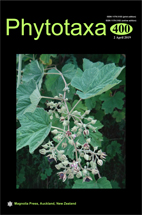Abstract
Representatives of the Gomontiellaceae (Oscillatoriales) are rare and hence unstudied cyanobacteria with unusual morphology, distributed in terrestrial and aquatic habitats all over the world. Investigation of the group based on an integrative approach is only beginning, and to understand the actual biodiversity and ecology, a greater number of cultivated strains is necessary. However, some ecological traits of these cyanobacteria (e.g. low population densities, the absence of conspicuous growth in nature) led to methodological difficulties during isolation in culture. One species in the family Gomontiellaceae, Crinalium magnum Fritsch et John, is characterized by prominent wide and flattened trichomes, and represented by the non-authentic strain SAG 34.87. Detailed previous investigation of this strain clearly showed its morphological discrepancy with the original description of C. magnum and the genus Crinalium in general. The new isolate from maritime sand dunes of the Baltic Sea coast (Germany), however, revealed morphological characters completely corresponding with the diagnosis of C. magnum. Phylogenetic analysis based on 16S rRNA sequences indicated a position of the new strain inside Gomontiellaceae. Both morphology and ultrastructure of the strain are congruous with characters of the family. Epitypification and emendation of C. magnum are proposed since the ecology and habitat of the original strain are congruent with the type locality of this rare species (sand, Irish Sea coast, North Wales, UK). We expanded the description of C. magnum by details of the filament development and specified dimensional ranges for trichomes and cells, as well as by new data about the transversely striated structure of mucilaginous sheath.

